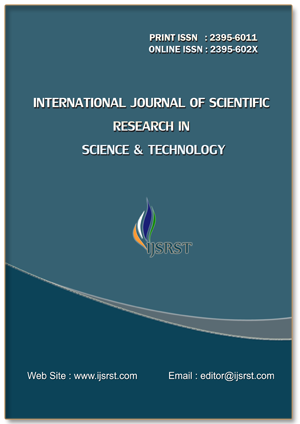Genetic Diversity and Population Structure Analysis of Cultured and Wild Populations of Labeo Rohita Using Microsatellite Markers
Keywords:
Labeo rohita, Microsatellite Markers, Genetic Diversity, Population Structure, Aquaculture, Conservation Genetics, FST, STRUCTURE analysisAbstract
The rohu, Labeo rohita, is a major freshwater fish species of economic importance in South Asian aquaculture. However, increasing reliance on hatchery-based propagation has raised concerns over the genetic integrity of cultured stocks. This study evaluated the genetic diversity and population structure of three wild (Ganges, Yamuna, Brahmaputra) and three cultured (West Bengal, Andhra Pradesh, Punjab) populations of L. rohita using 12 polymorphic microsatellite markers. A total of 180 individuals were analyzed to compare allelic richness, heterozygosity, and genetic differentiation. Results indicated significantly higher genetic diversity in wild populations (Na = 8.5, Ho = 0.75, He = 0.80) compared to cultured populations (Na = 5.3–6.1, Ho = 0.58–0.61, He = 0.64–0.67), with the Brahmaputra population showing the greatest variability. Genetic differentiation was moderate to high (FST = 0.042–0.192), and AMOVA revealed 17.6% variation among populations. STRUCTURE analysis suggested three genetic clusters (K = 3), with clear separation between wild and hatchery stocks. Principal Coordinate Analysis and Neighbor-Joining trees supported this differentiation, indicating genetic erosion and admixture in cultured lines. These findings underscore the genetic impact of domestication and unstructured breeding practices in hatcheries. To maintain genetic health, periodic introgression of wild germplasm and scientifically managed broodstock programs are recommended. The study provides critical genetic baselines for informed breeding, conservation, and resource management of Labeo rohita.
Downloads
References
Chauhan, T., et al. (2017). Genetic characterization of rohu (Labeo rohita) using microsatellite markers. Indian Journal of Fisheries, 64(3), 13–20.
Das Mahapatra, K., et al. (2020). Assessment of genetic variability in hatchery-bred and wild populations of Indian major carps. Aquaculture Reports, 18, 100545.
Imron, M. A., et al. (2019). Application of microsatellite markers in fish breeding and conservation: A review. Aquaculture and Fisheries, 4(4), 145–153.
Islam, M. S., et al. (2018). Genetic diversity and population structure of rohu (Labeo rohita) from wild and hatchery populations. Genetics and Molecular Research, 17(3).
Jena, J. K., et al. (2012). Status of aquaculture and fishery in India. Aquaculture Asia, 17(2), 11–17.
Lal, K. K., et al. (2004). Genetic variability in hatchery and wild populations of rohu (Labeo rohita). Journal of Fish Biology, 65, 1295–1302.
Nandeesha, M. C., et al. (2020). Advances in carp aquaculture in India. Aquaculture Reports, 18, 100478.
Rasal, K. D., et al. (2021). Genetic assessment of Indian major carps using microsatellite markers: Implications for breeding and conservation. Aquaculture International, 29, 1301–1312.
Chauhan, T., et al. (2017). Genetic characterization of rohu (Labeo rohita) using microsatellite markers. Indian Journal of Fisheries, 64(3), 13–20.
Das Mahapatra, K., et al. (2020). Assessment of genetic variability in hatchery-bred and wild populations of Indian major carps. Aquaculture Reports, 18, 100545.
Frankham, R., et al. (2010). Introduction to Conservation Genetics. 2nd ed. Cambridge University Press.
Imron, M. A., et al. (2019). Application of microsatellite markers in fish breeding and conservation: A review. Aquaculture and Fisheries, 4(4), 145–153.
Islam, M. S., et al. (2018). Genetic diversity and population structure of rohu (Labeo rohita) from wild and hatchery populations. Genetics and Molecular Research, 17(3).
Jena, J. K., et al. (2012). Status of aquaculture and fishery in India. Aquaculture Asia, 17(2), 11–17.
Lal, K. K., et al. (2004). Genetic variability in hatchery and wild populations of rohu (Labeo rohita). Journal of Fish Biology, 65, 1295–1302.
Nandeesha, M. C., et al. (2020). Advances in carp aquaculture in India. Aquaculture Reports, 18, 100478.
Rasal, K. D., et al. (2021). Genetic assessment of Indian major carps using microsatellite markers: Implications for breeding and conservation. Aquaculture International, 29, 1301–1312.
Downloads
Published
Issue
Section
License
Copyright (c) 2025 International Journal of Scientific Research in Science and Technology

This work is licensed under a Creative Commons Attribution 4.0 International License.
https://creativecommons.org/licenses/by/4.0





